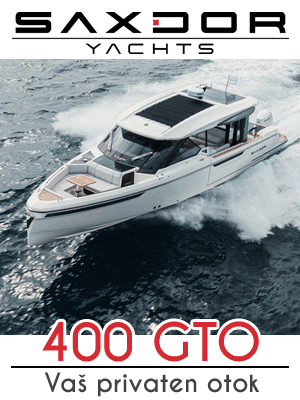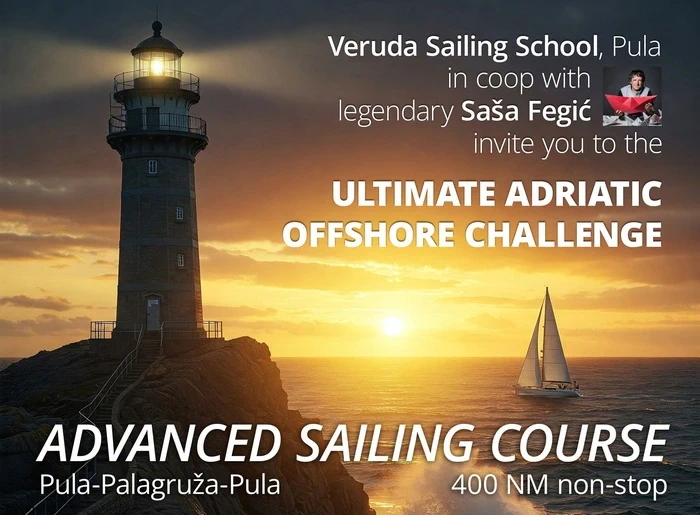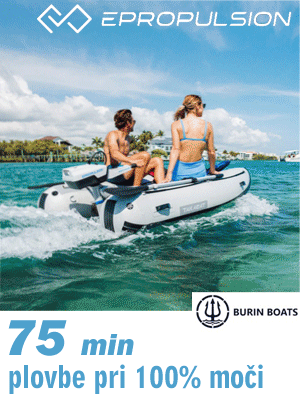News
News
Last from eShop
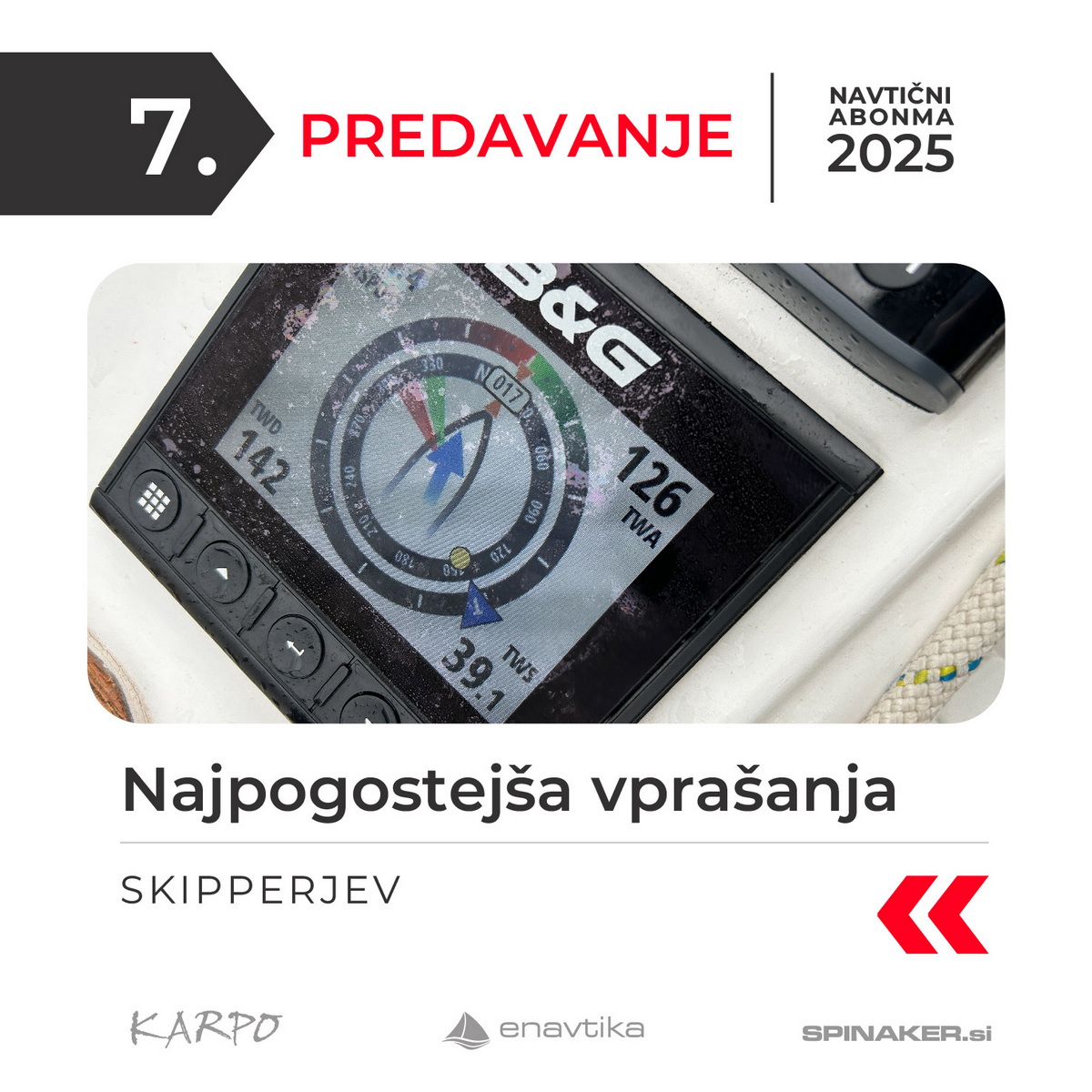 40.00€
40.00€
V četrtek 27.3.2025 ob 20.00 uri bo potekalo peto predavanje za vse navtike, ki bi radi svoj poletni dopust na plovilu preživeli brez stresa in težav. Tokrat bomo govorili o jadru spinaker in njegovi uporabi.
Obdelali bomo naslednje vsebine:
- Izvedba manevra MOB
- Privez s premcem naprej
- Iskanje primernega mesta za sidranje na polnem sidrišču
- Kako se v petek popoldne izogniti večurnemu čakanju na bencinskih črpalkah
- Jadro Code 0
- Kateri so dobri čarterji na Hrvaškem
- North U simulator
- Priporočljivi viri za učenje navtičnih vsebin
Predavanje bo potekalo preko aplikacije Microsoft Teams. V koliko na računalniku nimate nameščenega operacijskega sistema Windows (ki vsebuje program Teams), lahko predavanje spremljate preko spletnega brskalnika na naslovu https://teams.microsoft.com.
Datum predavanja: 27.3.2025
Ura predavanja: 20.00
Predavatelji: Maks Vrečko, Tomaž Gregorič, Matic Vrečko
Trajanje: 90 min
Predavanja bodo posneta in si jih v primeru odsotnosti lahko ogledate naknadno.
Predavatelj | Maks Vrečko
Maks Vrečko goji strast do jadranja in jadrnic že od leta 1994, ko je opravil izpit za voditelja čolna. Leta 2010 se je samostojno podal na svojo prvo plovbo s čartersko jadrnico, kar ga je, po nekaj letih stresa in nezgod, pripeljalo do spoznanja, da potrebuje več znanja.
Med letoma 2016 in 2018 je uspešno opravil zahteven izpit RYA Yachtmaster Offshore, s čimer je postavil temelje za zahtevnejše jadralne podvige. Svoje oceanske izkušnje je nadgradil z jadranjem preko Biskajskega zaliva in Avstralskega južnega morja.
Maks je lastnik jadrnice Elan 450 Karpo, s katero skupaj s svojo ekipo tekmuje na regatah. Najbolj odmeven uspeh je dosegel na prestižni regati Rolex Middle Sea Race, eni najtežjih offshore regat na svetu, kjer je ekipa osvojila 1. mesto v skupini IRC5.
Od leta 2019 Maks izvaja praktične tečaje za skipperje, ki navdušujejo tako začetnike kot tudi izkušene jadralce. Njegov pristop, osredotočen na intenzivnost in uporabne nasvete, zagotavlja udeležencem samozavest in veščine za varno ter uspešno plovbo.
Sopredavatelj | Tomaž Gregorič
Tomaž Gregorič se profesionalno ukvarja z navtičnim izobraževanjem že od leta 2001, ko je skupaj z Gregorjem Jeretičem ustanovil podjetje Spinaker d.o.o. Spinaker je od takrat izobrazil že več kot 36.000 ljudi, ki plujejo po Jadranu in drugih morjih. Spinaker pa je tudi avtor in založnik navtične literature v slovenščini in tujih jezikih, ki šteje že več kot 108.000 izvodov. Tomaž ni samo strasten jadralec, ampak tudi strasten pedagog, ki želi navtično znanje, tako teoretično kot praktično, prenesti na čim več bodočih navtikov in tistih, ki želijo svoje navtično znanje poglobiti.
Svoja teoretična znanja Tomaž neprestano širi s sodelovanjem z mnogimi evropskimi univerzami in akademijami na razvojnih projektih, svoja praktična znanja pa širi predvsem s pogostim poučevanjem na raznovrstnih tečajih jadranja in samostojno plovbo na Spinakerjevi jadrnici Dufour 350 GL.
Pomočnik predavatelja | Matic Vrečko
Matic je svojo prvo samostojno plovbo s čartersko jadrnico in skupino prijateljev izvedel pri 18 letih, pri 24 pa že samostojno preplul Atlantik. Njegovo vrhunsko znanje jadranja mu v regatnih ekipah pogosto prinese najzahtevnejšo vlogo taktika, kjer s svojimi odločitvami pomembno vpliva na rezultate.
Kot dipl. ing. strojništva je na družinski jadrnici Karpo izvedel vrsto tehničnih izboljšav, ki so prispevale k njeni boljši in bolj učinkoviti plovbi.
Matic svojo strast do jadranja uspešno prenaša na vrstnike. Poleg tega organizira flotna jadranja za mlade in poskrbi za zabavne aktivnosti, ki jadranje naredijo še bolj privlačno in nepozabno.
Predavanje: Odgovori na najbolj pogosta vprašanja skiperjev
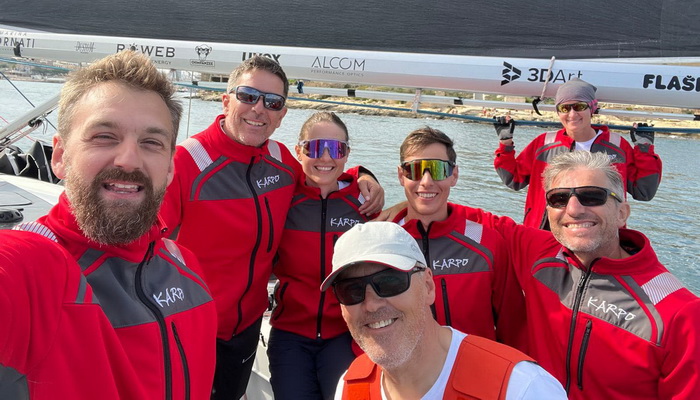
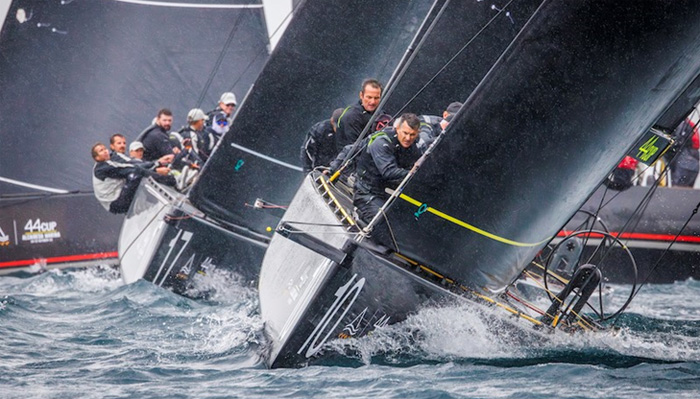
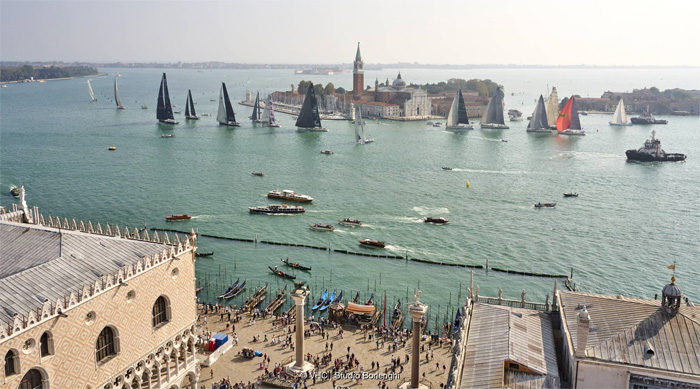
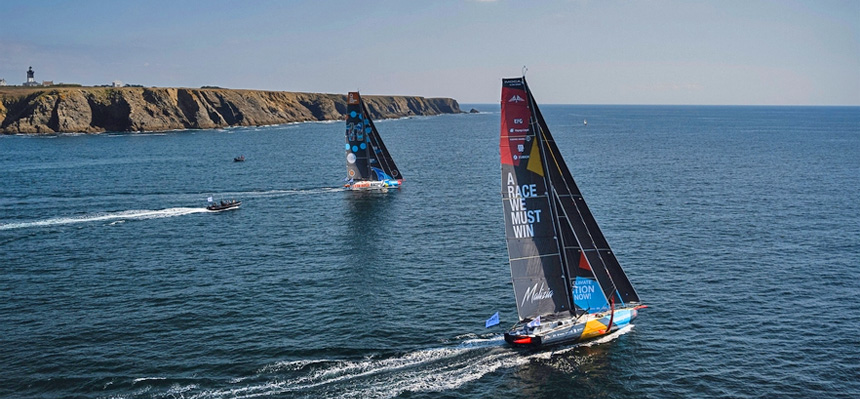
The competition is ...
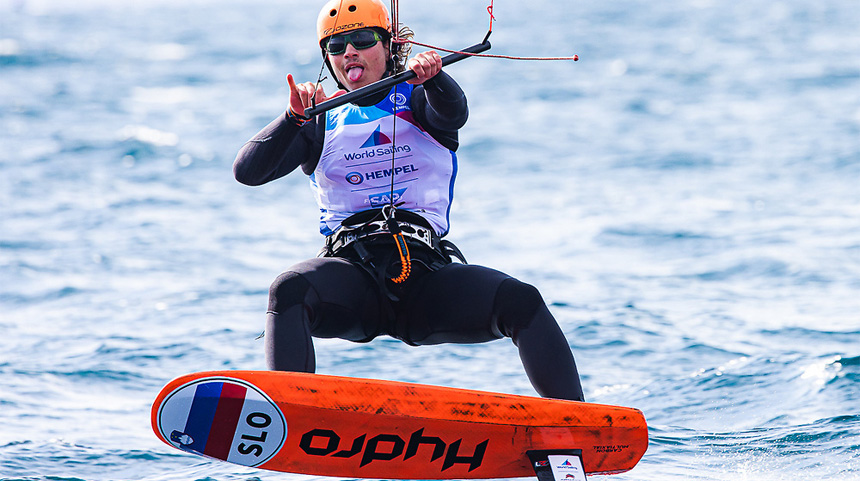
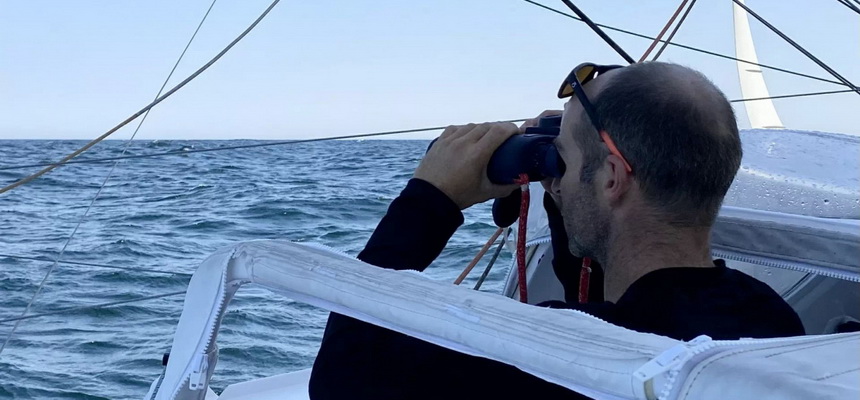
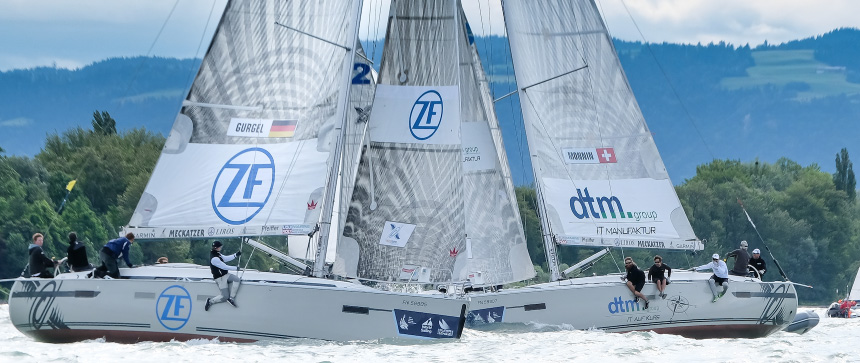
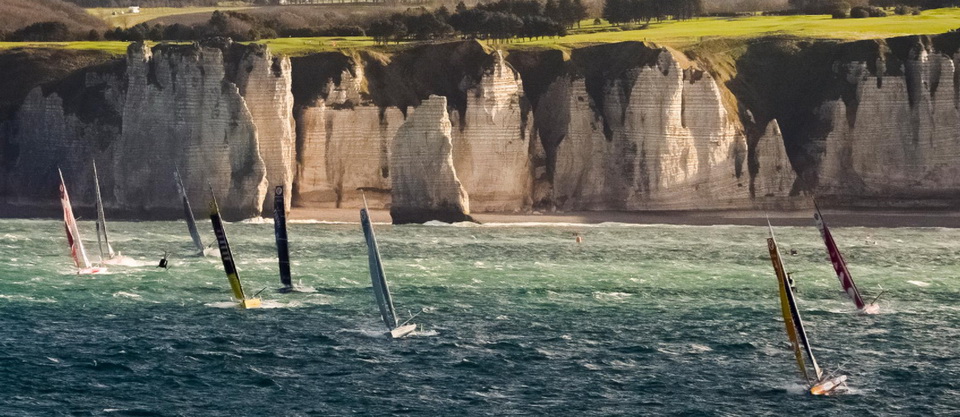
For its 15th edition, the Transat Jacques Vabre Normandie Le Havre is injecting fresh impetus into the race, bound for Martinique! For the first time in its history, the Transat Jacques Vabre is heading out to explore the West Indies. Indeed, it’s Fort-de-France Bay, which will host the finish of the longest and most demanding double-handed transatlantic race, in what promises to be a sensational spectacle.
The historic starting point remains the same: the Bassin Paul Vatine in Le Havre. In 2021, the founding members of the race, namely the City of Le Havre and JDE group, will be assisted with the organisation of the event by the Normandy region. Today, above and beyond being a race, the Transat Jacques Vabre Normandie Le Havre aspires to become an event. As such, it is eager to make the most of its considerable renown and turn it to good account, to inspire, to encourage and to pass on a message.
At the forefront of these new ambitions is the desire to break new ground in terms of environmental issues. This commitment to CSR (Corporate Social Responsibility) is evidenced by the fact that the Transat Jacques Vabre Normandie Le Havre will launch two innovative programmes: a competition (open to start-ups and students) to showcase projects promoting a reduction in our carbon footprint, together with a conference on good environmental practice.
Moreover, the fresh impetus championed by the new Transat Jacques Vabre Normandie Le Havre team will be used to support the feminisation of offshore racing, by encouraging a project helmed by a female sailor, who would like to participate in her first transatlantic race. Finally, the Coffee Route 2021 version also intends to strengthen the links between real sailing and virtual racing, by officially integrating a fifth Virtual Regatta class.
This year, out on the racetrack and in all the actions carried out in relation to the race, the Transat Jacques Vabre Normandie Le Havre has set itself the task of enhancing performance and respecting its environment. To this end, it hopes to join together numerous skippers ready to brave the Atlantic in pairs from 7 November, the start date for the 2021 edition.
ROUTE2021
4 CLASSES ON THE WATER, 3 DIFFERENT COURSES
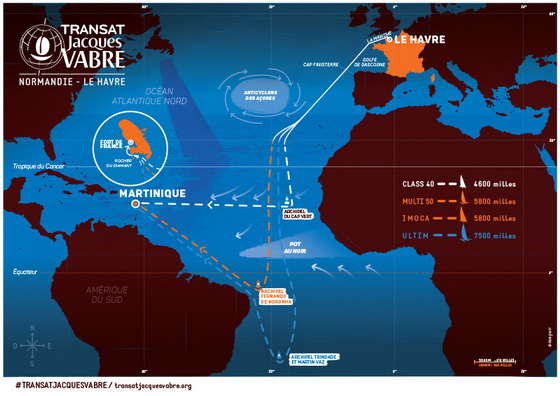
The race will set sail off Sainte-Adresse, to the north-west of Le Havre. One to two hours later, the fleet is expected to reach the Etretat mark, celebrated as the perfect vantage point for spectators. Indeed, the Transat Jacques Vabre Normandie Le Havre always kicks off with a show sequence before heading offshore.
The first section of the course involves a common-core syllabus for all the different classes. This will start with the exit from the English Channel, either by hunting down a trajectory along the English coast or skirting the Cotentin peninsula, according to the weather conditions. In the English Channel and at the north-west tip of Brittany, the skippers will have to be on their guard against the abundance of shipping.
Next up will be the negotiation of the Bay of Biscay, which can sometimes be a theatre for quite potent gales in November. Once around Cape Finisterre, the sailors will drop down the North Atlantic in a bid to hook onto the trade wind. It’s here, to the south of the Canaries, that the three courses will part ways.
The Ocean Fiftys and Imocas will both set a course towards the Brazilian archipelago of Fernando de Noronha, in a nod to the race’s historical destination. The complete circuit equates to 5,800 miles. These boats will cross the equator twice over, which translates as two passages through the doldrums, though the second, further out to the west, should be less hazardous. The Ocean Fiftys are expected to be first into Fort-de-France after 12 to 15 days at sea. Meantime, the Imocas could take 14 to 17 days.
The course adopted by the Class40s will be shorter in distance at 4,600 miles. They’ll have to leave the island of Sal to starboard, at Cape Verde, before powering eastwards to Martinique. They won’t have to negotiate the doldrums or the equator so the Class 40 circuit should be completed in 17 to 22 days.
Finally, the course for the Ultims, the fastest boats on the circuit, is inevitably the longest: 7500 miles. The designated waypoint rounding is another Brazilian archipelago, off the coast of Rio de Janeiro : Trindade and Martim Vaz. Here too, the crews must double up on their passages across the equator and through the doldrums. They are estimated to finish after 16 to 17 days.
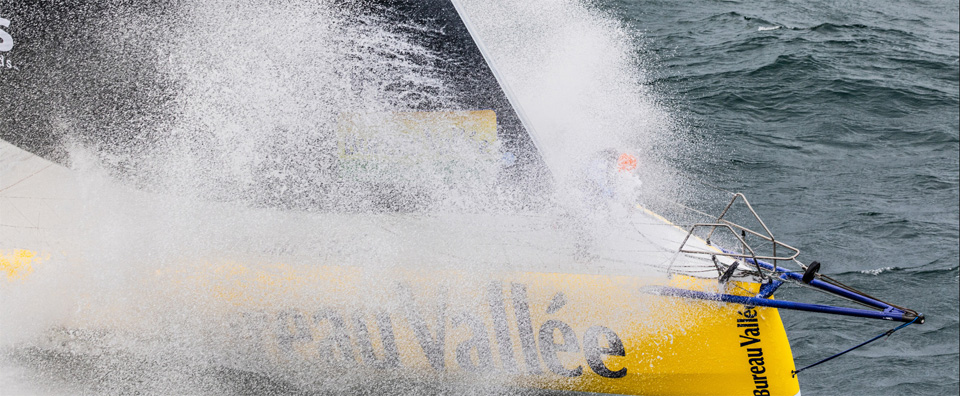
The skipper of Bureau Vallée 2 has made the big arc round the anticyclone and remains a strong contender for the final victory. Even if Louis Burton indicated that the front was beginning to show signs of air instability. The solo sailor seemed in great shape for the final sprint after 75 days at sea!
"It's windy, but it's quite unstable. I'm beginning to feel the front coming over us as it fills in. There are around fifteen knots with squalls and soft, gusty, rotating winds since the beginning of the night. As I am the furthest north, I see the effects (of the front) first. On this last section, it went better for Apivia because he is not yet feeling the influence of the front. It should become more and more unstable, coming in until Sunday morning.
Reaching the Azores will depend on how fast the front will move, on our speed and our ability to stay ahead. Ideally, we gybe behind the front, after the islands. But if we're a little slower, we risk crossing the islands in the middle... Theoretically, the first solution should take place.

It is rare to have so many boats so close together with four days to go. It's pretty crazy because a lot can still happen! Everybody has the pressure of the finish... But I try to stay away from all that and concentrate on the end of the race. So much the better if people are betting on me now: it didn't go too badly but it's not easy at the moment! I've racked up some miles, but I'm have also hit the front first, so... It's obviously harder for me than for the other boats further south. And nothing is decided until the finish! It's very difficult to make a guess. You have to be on top of it and it's not the time to have any lie-ins...
The pace has quickened a bit and it's true that I took advantage of the trade winds and the rounding of the high to recharge, to rest, to be in shape for this finish, but I am sure I am not the only one! I have a bit in the bank, but it will be tougher to remain calm as we face the quickening tempo with manoeuvres and handling, we have not had since the Pacific.
It's going to go very fast: in 24 hours, we'll pass a front. 20 hours later, we'll gybe towards Les Sables d'Olonne... And then we're going to knit out way up as we approach Cape Finisterre on the south of the Bay of Biscay! It's not going to be a very "comfortable"... But hey, for now, it's nice here. I was expecting to get cold soon. During the day, I am still in shorts and only put my boots back on last night. If it goes on like this all the way to the end it will be good.”
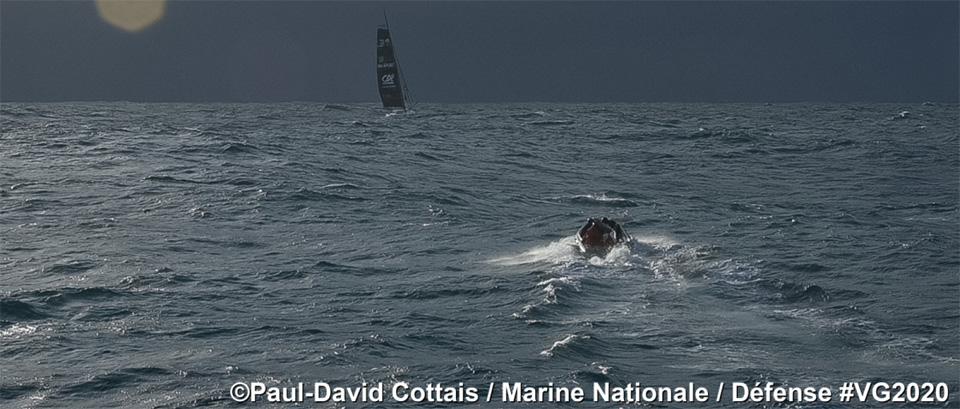
This is the good news this morning! At around 3:10 am (French time), 360 miles in the north of the Crozet archipelago, Kevin Escoffier (PRB) was disembarked from Jean Le Cam's boat and was picked up by the Nivôse, a French Navy frigate. The transhipment - via a semi-rigid - went well, despite a swell formed in the area.
Jean Le Cam resumed his race. In a message to the Vendée Globe Race Direction, Frédéric Barbe, captain of the Nivôse, wrote: “Kevin is in great shape, he is going to enjoy a hot shower. We are heading for Reunion. It's a beautiful day that begin."
Work Station Indian Ocean
Over 24 hours of intense work has left the inside of Louis Burton’s IMOCA Bureau Vallée in a mess but the third placed skipper confirmed this morning that his efforts, in collaboration with his shore team, have kept him in the race. Speaking on the 0400hrs TU call this morning, after he had just gybed at the Antarctic Exclusion Zone he said, “"I'm pretty burnt out and I admit that I came close to having to abandon". True to the philosophy of many competitors Burton was not giving everything away about his problems, other than having said earlier that he had automatic pilot troubles.
After a quieter period close to the ice exclusion zone, the main 11 strong peloton in the Indian Ocean see Charlie Dalin extending his lead slightly overnight to 233 miles over Thomas Ruyant. Burton confirmed he had 30-35kts of wind and a swell 4.5 metres. Most have gybed as the new front arrived bringing north westerly winds, now on a long port gybe across the Indian Ocean passing the Kerguelen Island some time tomorrow Monday.
Some 1800 miles behind Apivia the contrast in the wind and weather is stark from the group Alan Roura, Stephane Le Diraison, Armel Tripon, Arnaud Boissières have had a very frustrating period in light winds some 120 miles from the longitude of the Cape of Good Hope, these four have made only one or two knots at times and some went full 360 degree circles.

Top news
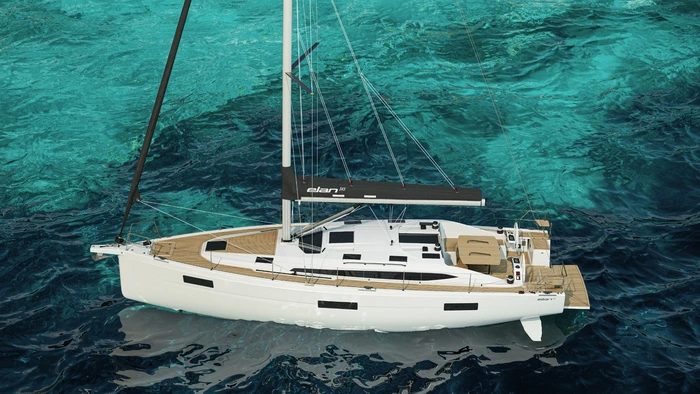
At Elan Yachts, we are expanding the customisation options for our popular Impression 45 model, offering more choices for interior finishes and materials. Previously available with a rustic oak interior and grey cupboard fronts, the Impression 45 will now be offered with three additional wood finishes:
- Natural Oak
- Natural Oak Brushed
- Natural Oak Brushed & Whitened
In addition to the expanded wood choices, we are now giving owners the ability to personalise the colour of the galley cupboard fronts and countertops, allowing for even greater flexibility in interior design. Customers can choose from a plethora of different color options for galley cupboard and cabinet fronts, as well as counter colorus, allowing them to mix and match - creating a virtually infinite amount of creative combinations.
A Designer’s Perspective on the New Interior Palette
To explore the potential of these new material options, we invited an interior designer to create some example configurations from all of the available options. The designer chose Natural Oak Brushed & Whitened as the base finish, noting that its soft, textured appearance provides a refined backdrop for a wide range of colour options. “This lighter oak finish works beautifully with pastel tones, offering a fresh and modern aesthetic that feels both elegant and inviting”, the designer explained.
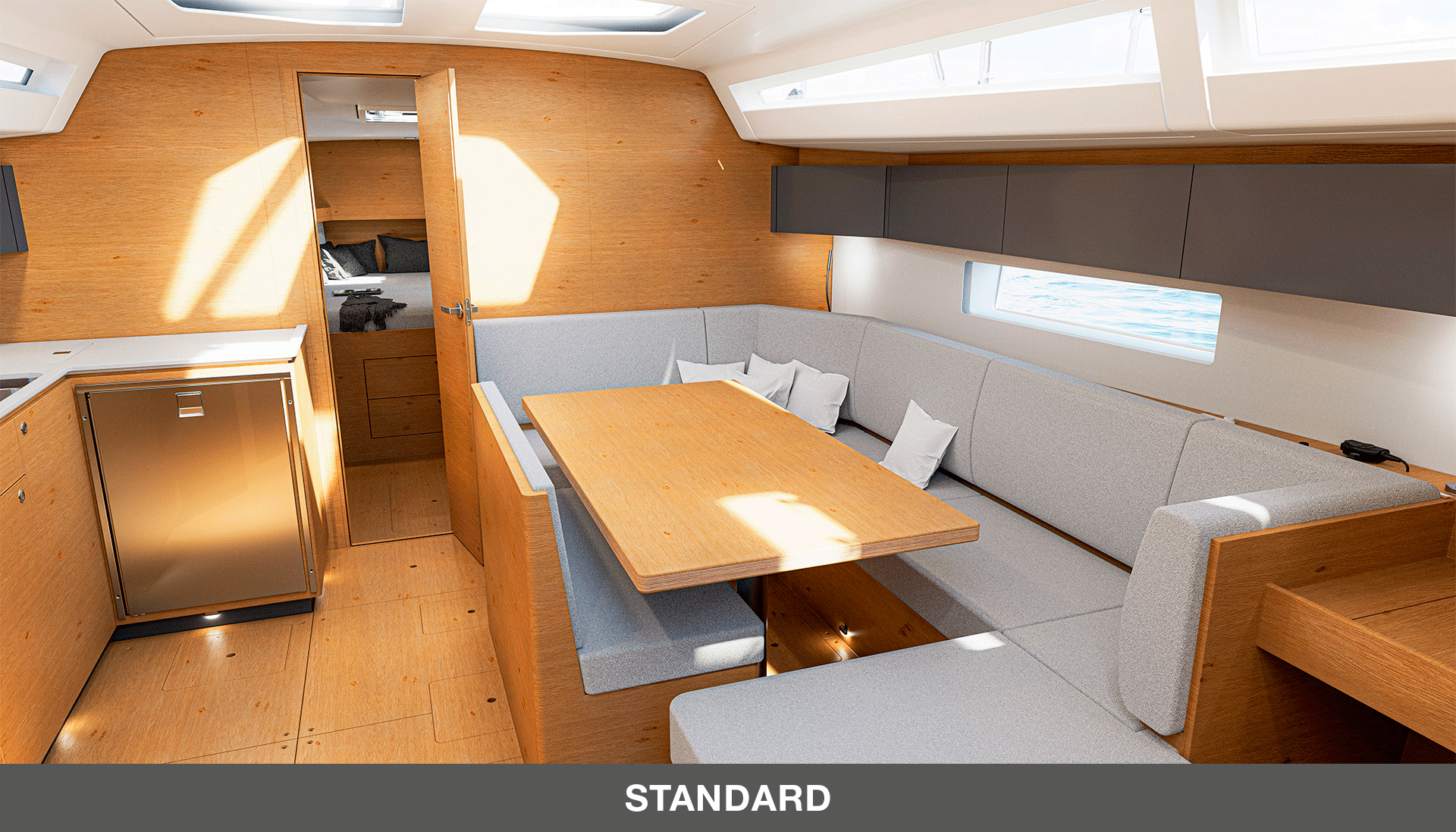
From there, three distinct colour combinations were selected for the galley cupboard fronts and countertops:
Deep Blue – “A sophisticated, modern choice reminding us of an elegant city apartment, bringing depth and contrast to the interior.”
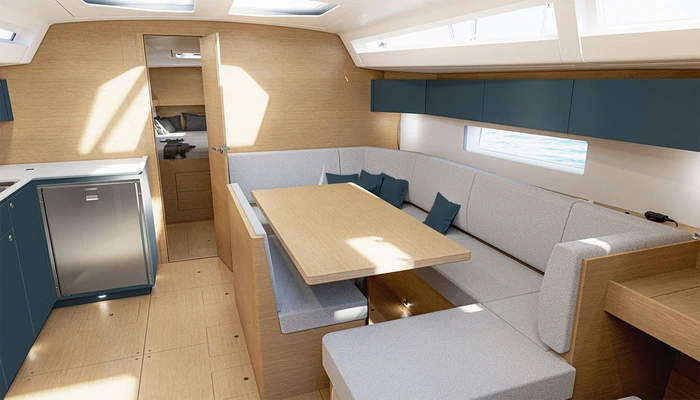
Cacao – “A warm, earthy tone that enhances the natural wood elements, creating a cosy, welcoming space, while keeping within the tradition of nautical interiors.”
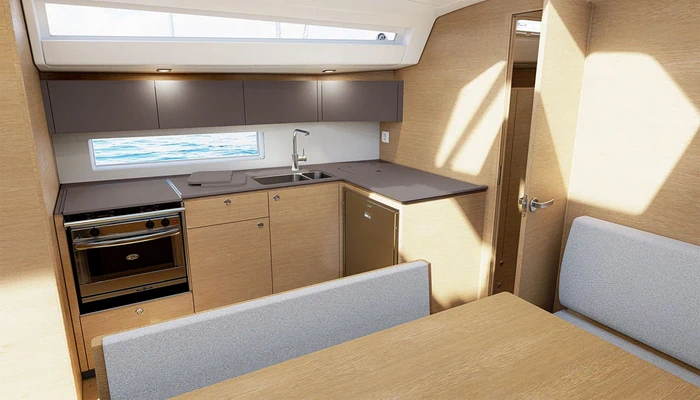
Eucalyptus – “This is my favourite combination—light, warm, and effortlessly modern. The unique pale green tone stands out while maintaining a sense of balance between warmth and style.”
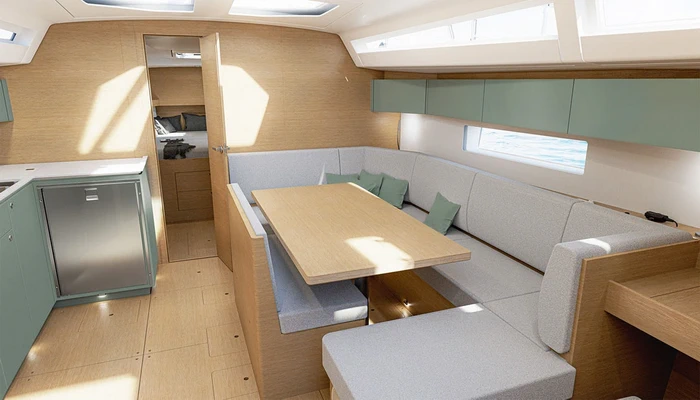
The Impression 45 is built with safety, comfort, and easy sailing in mind, and yet its performance stands out in its class. Thanks to smart naval architecture by Humphreys Yacht Design, it delivers better speed and handling than many comparable cruising yachts. What also sets it apart is our own 75-year-old in-house carpentry workshop, where our experienced craftsmen create interiors that blend modern elegance with traditional craftsmanship. The Impression 45 features high-quality wood finishes, solid wood details, and durable construction—contrasting with many competitors who rely on lighter, easy-to-assemble materials.
These updates reflect our commitment to offering more customisation while maintaining the build quality and craftsmanship that define the Elan Yachts brand. The new material options are available for all newly ordered Impression 45 models, starting immediately.



